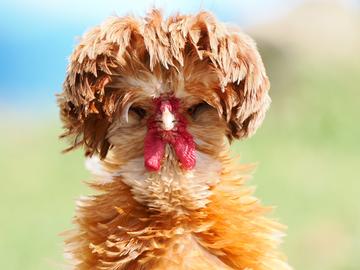
Photo credit: Robert May
New research transforms our understanding of the circumstances and timing of the domestication of chickens, their spread across Asia into the west, and reveals the changing way in which they were perceived in societies over the past 3,500 years.
An international team of researchers, including members of the PalaeoBARN team here at the School, have found that an association with rice farming likely started a process that has led to chickens becoming one of the world’s most numerous animals. They have also found evidence that chickens were initially regarded as exotica, and only several centuries later used as a source of ‘food’.
Previous efforts have claimed that chickens were domesticated up to 10,000 years ago in China, Southeast Asia, or India, and that chickens were present in Europe over 7,000 years ago.
The new studies show this is wrong, and that the driving force behind chicken domestication was the arrival of dry rice farming into southeast Asia where their wild ancestor, the red jungle fowl, lived. Dry rice farming acted as a magnet drawing wild jungle fowl down from the trees, and kickstarting a closer relationship between people and the jungle fowl that resulted in chickens.
This domestication process was underway by around 1,500 BC in the Southeast Asia peninsula. The research suggests that chickens were then transported first across Asia and then throughout the Mediterranean along routes used by early Greek, Etruscan and Phoenician maritime traders.
Professor Greger Larson said: “This comprehensive re-evaluation of chickens firstly demonstrates how wrong our understanding of the time and place of chicken domestication was. And even more excitingly, we show how the arrival of dry rice agriculture acted as a catalyst for both the chicken domestication process and its global dispersal.”
During the Iron Age in Europe, chickens were venerated and generally not regarded as food. The studies have shown that several of the earliest chickens are buried alone and un-butchered, and many are also found buried with people. Males were often buried with cockerels and females with hens. The Roman Empire then helped to popularise chickens and eggs as food. For example, in Britain, chickens were not regularly consumed until the third century AD, mostly in urban and military sites.
The international team of experts re-evaluated chicken remains found in more than 600 sites in 89 countries. They examined the skeletons, burial location and historical records regarding the societies and cultures where the bones were found. The oldest bones of a definite domestic chicken were found at Neolithic Ban Non Wat in central Thailand, and date to between 1,650 and 1,250 BC.
The team also used radiocarbon dating to establish the age of 23 of the proposed earliest chickens found in western Eurasia and north-west Africa. Most of the bones were far more recent than previously thought. The results dispel claims of chickens in Europe before the first millennium BC and indicate that they did not arrive until around 800 BC. Then, after arriving in the Mediterranean region, it took almost 1,000 years longer for chickens to become established in the colder climates of Scotland, Ireland, Scandinavia and Iceland.
The two studies, published in the journals Antiquity and The Proceedings of the National Academy of Sciences USA, were carried out by academics at the universities of Exeter, Munich, Cardiff, Oxford, Bournemouth, Toulouse, and universities and institutes in Germany, France and Argentina.
Visit the Palaeobarn website here: https://www.palaeobarn.com/
The two papers are:
Best, J. et al. Redefining the timing and circumstances of the chicken’s introduction to Europe and north-west Africa. Antiquity. (https://doi.org/10.15184/aqy.2021.90)
Peters, J. et al. The biocultural origins and dispersal of domestic chickens. Proceedings of the National Academy of Sciences USA. (https://www.pnas.org/cgi/doi/10.1073/pnas.2121978119)